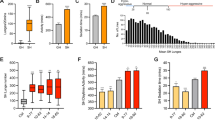Abstract
Studies of conditioned reflex courtship suppression in mutant Drosophila males in two tests – a memory retention test (with a virgin female) and a repeat training test (with a fertilized female) – yielded experimental support for a previously suggested physiological model of the acquisition of this reflex. Mutations altered both types of conditioned association suggested in the model, i.e., the association between the conditioned and unconditioned stimuli (lat, rut, dnc, amn, and P153) and the association between the conditioned stimulus and the aversive motivational system mediating the action of the unconditioned stimulus (P171). A third category of mutants appeared to have a disturbance to the function of the aversive motivational system (P95 and P124).
Similar content being viewed by others
REFERENCES
N. G. Kamyshev, K. G. Iliadi, Yu. V. Bragina, E. V. Savvateeva-Popova, E. V. Tokmacheva, and R. Preat, “Identification of mutant Drosophila with memory defects after acquisition of conditionedreflex courtship suppression,” Ros. Fiziol. Zh. im. I. M. Sechenova, 85, No. 1, 84–92 (1999).
N. G. Kamyshev, K. G. Iliadi, and J. V. Bragina, “Drosophila conditioned courtship. Two ways of testing memory,” Learning and Memory, 6, No. 1, 1–20 (1999).
R. L. Davis, “Physiology and biochemistry of Drosophila learning mutants,” Physiol. Rev., 76, 299–317 (1996).
A. DiAntonio, “Learning something ORIGINal at the Drosophila neuromuscular junction,” Neuron, 23, 1-2 (1999).
A. Dickinson and M. F. Dearing, “Appetite-aversive interactions in inhibitory processes,” in: Mechanisms of Learning and Motivation. A Memorial Volume to Jerzy Konorski, A. Dickinson and R. A. Boakes (eds.), Erlbaum, Hillsdale, New York (1979).
J. Dubnau and T. Tully, “Gene discovery in Drosophila: new insights for learning and memory,” Ann. Rev. Neurosci., 21, 407–444 (1998).
D. A. Gailey, F. R. Jackson, and R. W. Siegel, “Male courtship in Drosophila. The conditioned response to immature males and its genetic control,” Genetics, 102, 771–782 (1982).
D. A. Gailey, F. R. Jackson, and R. W. Siegel, “Conditioning mutations in Drosophila melanogaster affect an experience-dependent behavioral modification in courting males,” Genetics, 106, 613–623 (1984).
J. C. Hall, “The mating of a fly,” Science, 264, 1702–1714 (1994).
M.A. Joiner and L. C. Griffith, “CaM kinase II and visual input modulate memory formation in the neuronal circuit controlling courtship conditioning,” J. Neurosci., 17, No. 23, 9384–9391 (1997).
M. A. Joiner and L. C. Griffith, “Mapping of the anatomical circuit of CaM kinase-dependent courtship conditioning in Drosophila,” Learning and Memory, 6, 177–192 (1999).
M. A. Joiner and L. C. Griffith, “Visual input regulates circuit configuration in courtship conditioning of Drosophila melanogaster,” Learning and Memory, 7, No. 1, 32–42 (2000).
W. G. Quinn, W. A. Harris, and S. Benzer, “Conditioned behavior in Drosophila melanogaster,” Proc. Natl. Acad. Sci. USA, 71, 708–712 (1974).
R. W. Siegel and J. C. Hall, “Conditioned responses in courtship behavior of normal and mutant Drosophila,” Proc. Natl. Acad. Sci. USA, 76, 3430–3434 (1979).
T. Tully and W. G. Quinn, “Classical conditioning and retention in normal and mutant Drosophila melanogaster,” J. Comp. Physiol., A157, 263–277 (1985).
S. A. Zawistowski, “A replication demonstrating reduced courtship of Drosophila melanogaster by associative learning,” J. Comp. Physiol., 102, 174–176 (1988).
Author information
Authors and Affiliations
Rights and permissions
About this article
Cite this article
Bragina, Y.V., Kamyshev, N.G. Comparative Studies of Four Drosophila P-Insertion Mutants with Memory Defects. Neurosci Behav Physiol 33, 73–79 (2003). https://doi.org/10.1023/A:1021183432491
Issue Date:
DOI: https://doi.org/10.1023/A:1021183432491




